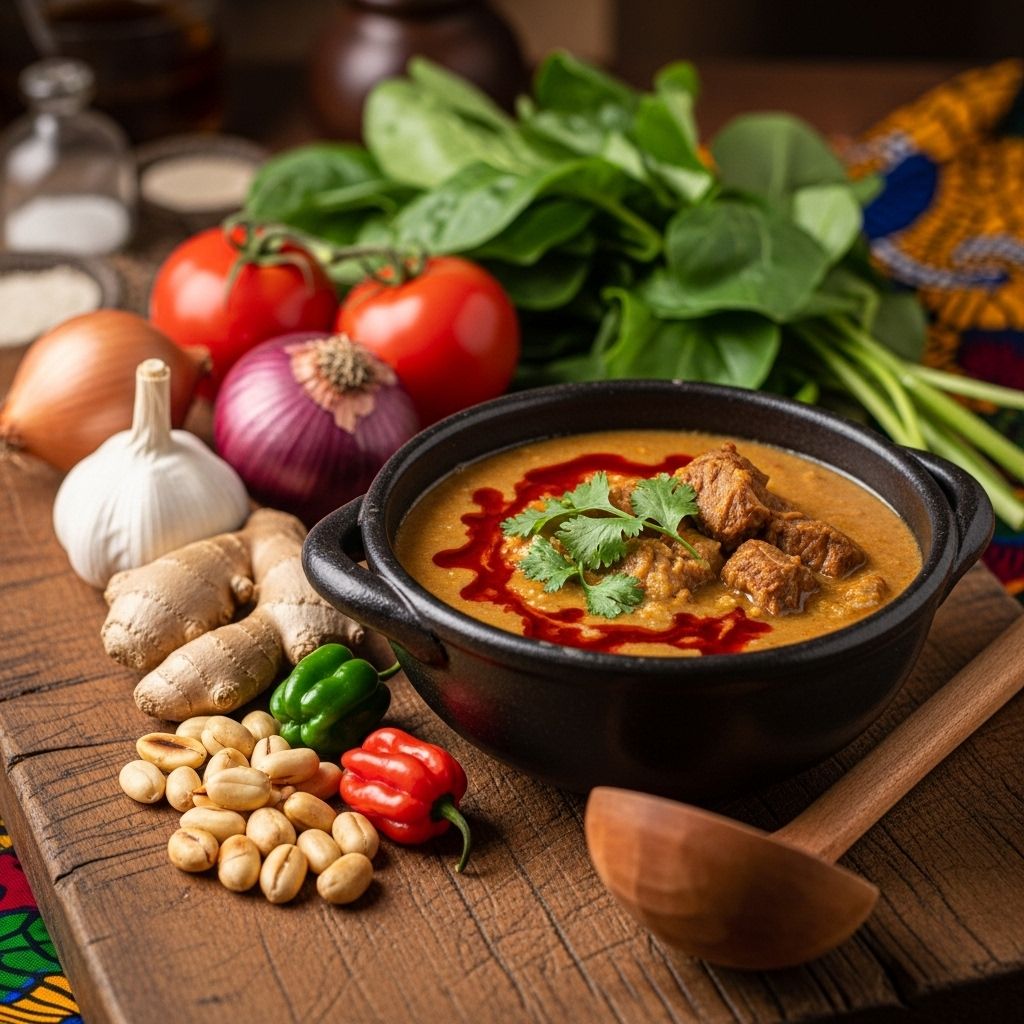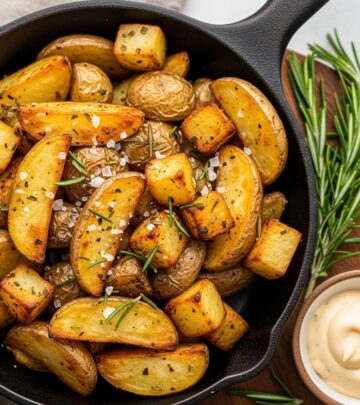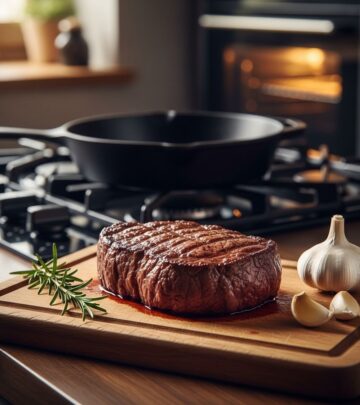A Culinary Journey Through Ghanaian Groundnut Soup
Peanut-based stew brings people together with its creamy texture and layered flavors.

Ghanaian Groundnut Soup: Origins, Recipe, and Cultural Depth
One of West Africa’s most enigmatic and comforting dishes, Ghanaian groundnut soup (widely known elsewhere as peanut stew) is a cornerstone of Ghanaian culinary heritage. Featuring earthy peanuts, tender meats, and a symphony of local flavors and textures, this beloved soup tells a story far richer than its simple ingredients might imply.
The Legacy and Ubiquity of Groundnut Soup in Ghana
Across Ghana, groundnut soup is much more than just food—it’s a symbol of unity, celebration, and adaptability. Whether served in family homes, at lavish events, or in bustling local eateries, this dish bridges generations and geographies. Known locally as nkate nkwan, groundnut soup’s appeal lies both in its rich flavor and its versatility with proteins and accompaniments.
- National staple: Eaten nationwide by Ghanaians of all backgrounds.
- Festive favorite: Common on special occasions, weddings, and funerals.
- Regional twists: Each ethnic group brings unique touches to the basic recipe.
Tracing the Roots: How Peanuts Became Ghana’s Culinary Star
The journey of groundnuts (peanuts) from their South American origins to West Africa is itself a testament to global exchange. Introduced in the colonial era, peanuts rapidly became integral to Ghanaian foodways. Rich in protein and affordable to cultivate, they seamlessly replaced native oilseeds in local soups and stews.
The result? Groundnut soup, now a classic, continues to evolve with every generation.
Understanding the Building Blocks: Key Ingredients
While the recipe can be altered to personal or regional taste, several ingredients are considered essential:
- Peanut paste: The heart of the soup, traditionally homemade by slowly roasting and grinding peanuts to a smooth, rich paste.
- Tomato: Lends acidity and color, with fresh, canned, or puree versions used interchangeably.
- Spices and aromatics: Ginger, garlic, onions, and spicy chili peppers provide depth and a subtle kick.
- Proteins: Goat meat, tripe, beef, chicken, or fish. Some cooks mix these for layers of flavor.
- Veggies (optional): Okra, garden eggs (African eggplant), or leafy greens for variety and texture.
Ingredient Table
| Ingredient | Role in the Dish |
|---|---|
| Peanut paste (groundnuts) | Provides nutty flavor, thick texture, and protein |
| Fresh or canned tomatoes | Brings acidity and color to the soup |
| Chili or Scotch bonnet pepper | Adds spice and warmth |
| Meats (goat, beef, tripe, chicken, fish) | Main protein, varies by preference or occasion |
| Ginger, onions, garlic | Aromatics that build complexity and depth |
| Salt, Maggi cubes, spices | Balances and enhances overall flavor |
| Vegetables (okra, garden eggs) | Optional for texture and nutrition |
Preparation: A Step-by-Step Guide
Although every family has slight variations, the process typically unfolds as follows:
- Prepare the peanut paste: Roast raw peanuts until fragrant, then grind into a smooth paste using a mortar, blender, or food processor.
- Cook the meat: Clean and season your choice of proteins with ginger, garlic, salt, and pepper. Simmer or parboil until partially cooked, reserving the flavorful broth.
- Sauté aromatics: In a large pot, gently cook chopped onions, ginger, garlic, and chilies in oil until translucent and fragrant.
- Add tomatoes: Stir in tomato paste or fresh tomatoes, allowing them to cook down to a rich, thick sauce.
- Combine peanut paste and broth: Gradually mix in the peanut paste, stirring vigorously to prevent lumps. Add reserved broth or water, thinning the mixture to the desired consistency.
- Simmer and season: Return the parboiled meats to the pot. Simmer over medium to low heat, stirring often to avoid scorching. Skim off oil as it rises to the surface for a silky texture. Taste and adjust seasoning with salt, bouillon cubes, or additional pepper as needed.
- Add vegetables (if using): Towards the end, gently fold in okra, garden eggs, or leafy greens and cook until just tender.
Texture, Taste, and Troubleshooting
Groundnut soup should be smooth, silky, and rich, with a deep peanut flavor, gentle heat, and subtle complexity from the meat and spices. Too thick? Add water or broth. Too salty? Dilute with more tomatoes or water. Not peanutty enough? Stir in more paste and simmer. As with all Ghanaian soups, it only improves after a day’s rest in the refrigerator.
Serving Suggestions: Accompaniments and Traditions
Groundnut soup is seldom served alone! Traditional starchy sides are essential to enjoy every drop:
- Fufu: A doughy, elastic mash of cassava and plantains, pounded until smooth. Most classic pairing.
- Rice balls (Omotuo): Soft, sticky balls of rice that soak up the soup beautifully.
- Banku: Fermented corn-and-cassava dough, slightly tangy and chewy.
- Eba: Dried cassava (garri) stirred into a mash—the Nigerian interpretation often served regionally in Ghana too.
Traditionally, these starches are pinched off by hand and dipped, savoring soup and meat together in each mouthful.
Cultural Context: Symbolism and Social Role
Groundnut soup is more than culinary nostalgia—it’s a dish that weaves into the tapestry of Ghanaian life, marking ceremonies from birth to death, and even acting in some contexts as a symbol of reconciliation or festive togetherness. Its flexible ingredient list enables cooks from all walks of life to share in this cultural treasure, no matter their budget or location.
- Family gatherings: Passing recipes between generations, and sharing stories over communal bowls.
- Celebrations and rites: Often chosen for weddings, funerals, and other important events.
- Hospitality: Welcoming guests with this dish is a mark of warmth and generosity.
Variations Across Ghana’s Regions
There is no single, “authentic” way to prepare groundnut soup. Regional, ethnic, and personal interpretations abound:
- North: Sometimes simpler, with drier, roasted peanut paste, and typically less tomato.
- South & Akan regions: More tomato-based, with complex aromatics and a choice of leafy greens.
- Ga communities: Might include dried fish for salty depth and umami.
- Vegetarian: Modern cooks sometimes use tofu, mushrooms, or yams in place of meat.
Each bowl is thus both deeply personal and undeniably Ghanaian.
Nutrition and Health Benefits
Thanks to its primary ingredients, groundnut soup offers a blend of essential nutrients:
- Rich in plant-based protein (from peanuts)
- Vitamins, antioxidants, and minerals from tomatoes, ginger, and garlic
- High in fiber and micronutrients, especially with added vegetables
- Wholesome fats for sustained energy
- Easy to modify for specific dietary needs (gluten-free, vegetarian, etc.)
Tips from Ghanaian Cooks: Achieving the Perfect Soup
- Roast your peanuts: For maximum flavor, avoid using raw or pre-roasted commercial peanut butter with added sugar. Roast your own whenever possible.
- Patience is key: Simmer the soup gently, allowing flavors to meld and oil to rise for a luxurious mouthfeel.
- Experiment with proteins: Combine different meat cuts, including bones and tripe, for greater depth.
- Don’t forget the spice: Scotch bonnet or habanero chili add authentic heat—adjust according to taste.
- Serve fresh and hot: Or allow to rest overnight for flavors to deepen—the traditional way for large gatherings.
Frequently Asked Questions (FAQs)
Q: Can I make groundnut soup without meat?
A: Absolutely! Substitute meat with mushrooms, yams, beans, or plant-based meats. The real star is the rich peanut-tomato base.
Q: Is it necessary to use homemade peanut paste?
A: Homemade paste gives the deepest flavor, but unsweetened, natural peanut butter is an acceptable shortcut if you’re short on time.
Q: How spicy is traditional groundnut soup?
A: Recipes vary, but a moderate amount of chili adds warmth without being overwhelming. Adjust heat to your preference.
Q: What can I pair with leftovers?
A: Leftover soup keeps well and can be paired with rice, cooked yam, or even crusty bread—delicious for days!
Q: Can I freeze groundnut soup?
A: Yes, the soup freezes well. Store in airtight containers for up to three months and thaw gently on the stove with a splash of water.
Conclusion: The Enduring Appeal of Groundnut Soup
From bustling city neighborhoods to rural villages, Ghana’s groundnut soup is more than sustenance: it is comfort, memory, and community in a bowl. Every ingredient, every simmering pot, and every shared meal carries the stories of a people whose ingenuity and warmth are as rich as the soup they cherish. Try it for yourself—explore the legacy, savor the taste, and discover why this creamy, spicy, and deeply loved soup remains the pride of Ghanaian cuisine.
References
Read full bio of Sneha Tete












